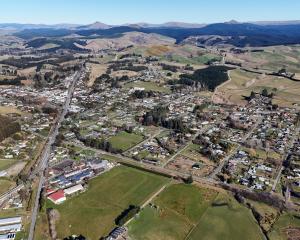The size of the financial settlement is confidential between Heritage NZ and farming company Mitchell and Webster.
Oamaru industrial and pastoral heritage researcher Bruce Comfort contacted Heritage NZ when he was told the kilns were being dismantled.
He was familiar with them, having photographed and recorded the site.
Yesterday, he said he was ''bitterly disappointed at the time'' they were badly damaged, and was hoping they could be restored.
However, he recognised now that was impractical, and was satisfied a settlement had been reached which would fund a project to put on record North Otago sites.
''It is probably the only outcome expected in the circumstances.''
Mitchell and Webster spokesman Nick Webster said yesterday the company could now move on from the incident, dating back to March this year when the Teaneraki lime kilns - known as Meek's kilns - were partially dismantled to provide clearance for an irrigator on the dairy conversion at the Enfield end of Coalpit Rd.
''We have worked through the process and come to a resolution,'' Mr Mitchell said when contacted for comment.
The amount of the settlement was confidential, he said.
Two lime kilns on the property dated back to 1896 and 1906 and were among the earliest kilns built in the region, Heritage NZ Otago-Southland archaeologist Dr Matt Schmidt said.
About 3m to 4m was taken off the kilns during earthworks before work was halted.
Because the working area and one of the kilns were pre-1900, an archaeological authority was required before work started.
At the time, Mr Webster said the company had on January 15 been granted resource consent from the Waitaki District Council for the dairy conversion, but the kilns were not listed for protection in either the district plan or categorised by Heritage NZ.
The company was not aware one of the kilns had been built before 1900 and was automatically protected.
The matter was reported to Heritage NZ and, after an investigation, Mitchell and Webster acknowledged the breach.
The company agreed to contribute financially towards a Heritage NZ project to input field and historic data on 180 archaeological sites in North Otago into the New Zealand Archaeological Association's national database (Archsite).
The contribution would go a long way to ensuring sites were recorded on Archsite and information was readily accessible to the farming community and developers.











